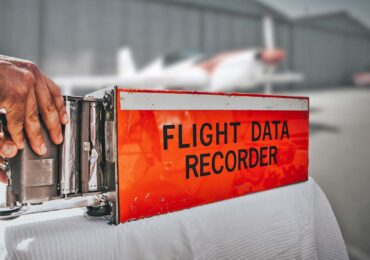When it comes to aviation safety, one of the most important tools that help investigators understand what happened during a flight is the flight recorder. But what exactly is a flight recorder, and how does it work? Often referred to as a flight data recorder (FDR), this device is crucial in capturing key information from an aircraft’s flight. It records various parameters such as altitude, speed, and engine performance, all of which are vital when analyzing a flight’s operation. In this article, we’ll explore the purpose and functions of flight recorders, and why they play such an essential role in aviation safety.
What Is a Flight Data Recorder?
A flight data recorder (FDR) is a crucial device in aviation designed to monitor and store critical flight information. These devices are commonly known as black boxes and are mounted in the tail of an aircraft for safety reasons. Modern FDRs now record a wide range of parameters and are designed to withstand harsh conditions, making them indispensable for aviation safety.
Flight Data Recorder History
The history of the flight black box dates back to the late 1950s. The first version of the device was developed by Australian researcher Dr. David Warren in 1958, following a series of aviation accidents where investigators realized that important flight data could provide critical insights into the causes of crashes. His research led to the creation of the “Flight Memory Unit,” a precursor to the modern flight data recorder. This early version paved the way for more advanced systems used today in commercial aviation.
Over time, flight data recorders have evolved significantly, with advances in technology enabling the recording of even more detailed information, such as cockpit voice recordings, engine performance, and real-time flight data. These advancements have made flight data recorders even more vital in accident investigations, ensuring safer skies for future generations.


What Do Flight Recorders Do?
As mentioned above, a flight data recorder (FDR), also known as a plane black box, plays a critical role in aviation safety by capturing and storing essential data about an aircraft’s performance during flight. It is often referred to as the “black box in a plane,” even though it is typically bright orange for visibility in case of an accident. But what exactly do these devices do, and why are they so vital for aviation safety?
In simple terms, the flight data recorder records a wide range of parameters related to the flight, such as the aircraft’s speed, altitude, heading, engine performance, and other crucial information. These parameters are continuously monitored and stored throughout the flight. By doing so, the flight data recorder creates a detailed record of the aircraft’s performance, which can be vital in the event of an incident or accident. The data stored in the black box in a plane helps investigators reconstruct the flight’s final moments and determine the cause of the accident.
The “What is a flight data recorder?” question is often followed by the question, “Why is this data so important?” The reason is that modern aircraft are complex systems with thousands of components working together to ensure a safe flight. A flight recorder provides a snapshot of all these elements in real-time, allowing investigators to pinpoint exactly what went wrong in the event of an accident. This data can include information about flight controls, autopilot settings, altitude changes, and even cockpit sounds in some cases.
There are two main types of flight recorders: the Flight Data Recorder (FDR) and the Cockpit Voice Recorder (CVR). While the FDR records flight parameters, the CVR captures the sounds and conversations in the cockpit, including communication between the pilots and air traffic control. This combination of data allows investigators to gather a comprehensive picture of the flight and its circumstances leading up to the incident.
In addition to capturing data during regular flights, flight recorders are designed to withstand extreme conditions. They are built to endure high-impact crashes, intense heat, and even underwater pressures. Their primary purpose is to preserve flight data for as long as necessary to support accident investigations, and in many cases, they have been crucial in uncovering the causes of aviation accidents, ultimately leading to improvements in aviation safety worldwide.
You can also read our blog post named What are the In-Flight Services? to learn more about the topic.
Frequently Asked Questions About Flights Recorder
What does a flight recorder do?
A flight recorder stores critical data about an aircraft’s performance, such as speed, altitude, and engine parameters, to assist in investigations after an accident.
Why are black boxes called black boxes and what is their real color?
Black boxes are called “black boxes” due to a historical term used by the aviation industry, though their real color is actually bright orange or red to ensure they can be easily found after an accident.
Do flight recorders transmit location?
Modern flight recorders do not transmit location directly; however, some systems like ADS-B and emergency locator transmitters can provide location data during or after an incident.
What happens if you open a flight recorder?
Opening a flight recorder without proper authorization could damage the device and its data, which is crucial for accident investigations; it is illegal to tamper with flight recorders.















